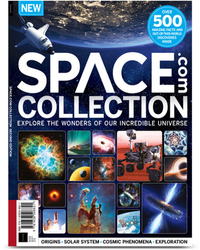China's Yutu 2 rover finds 'milestone' on far side of the moon
This weird elongated rock shard could have been displaced by a meteor impact.
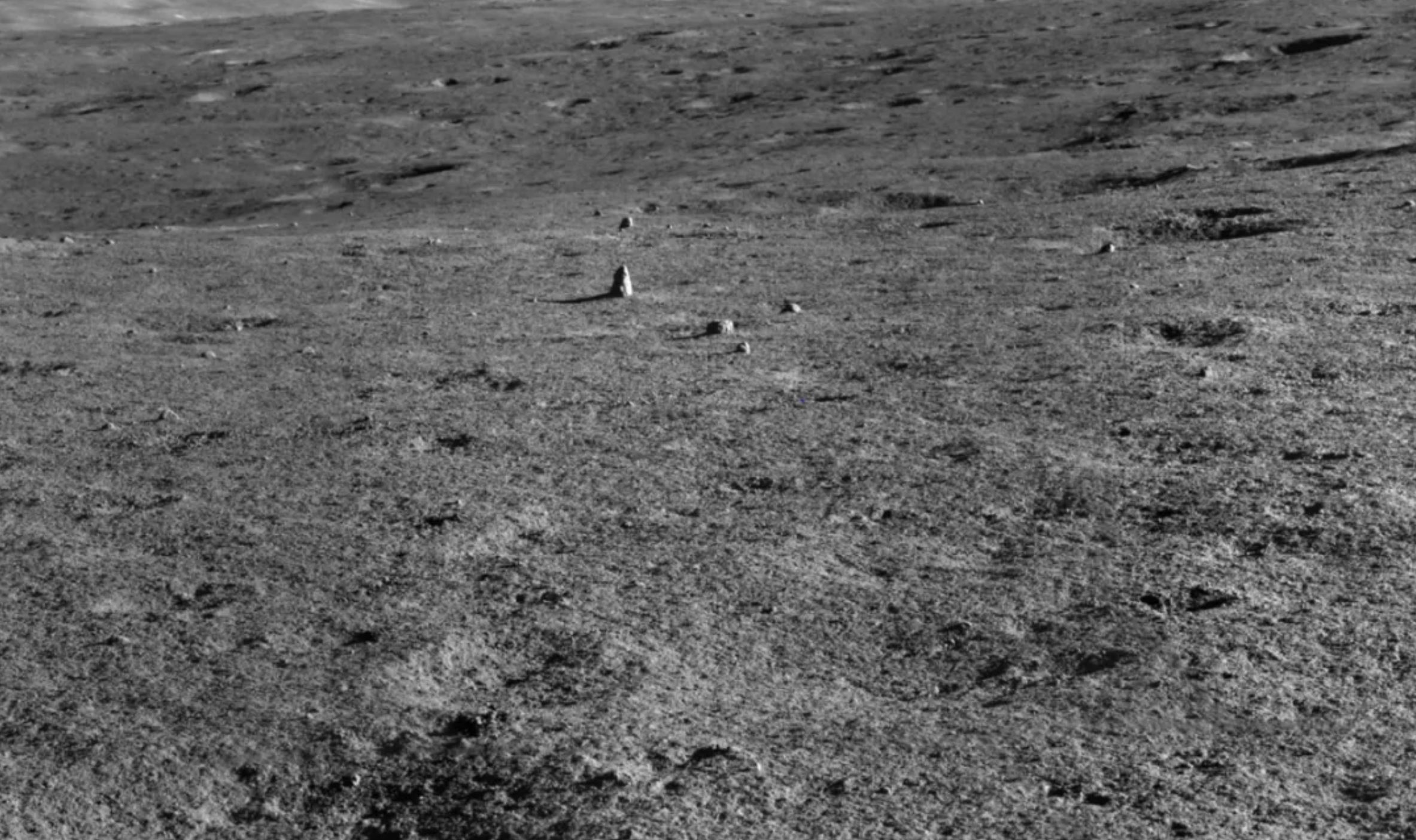
China's Chang'e 4 spacecraft are back in action for a 27th lunar day on the far side of the moon, but it's the discoveries from the mission's previous lunar day that have scientists excited.
The Chang'e 4 lander and Yutu 2 rover resumed activities on Feb. 6 after hibernating during the severe cold of lunar night, according to the Chinese state-run media outlet Xinhua. But one lunar day earlier the rover came across a curious rock specimen which the Yutu 2 drive team began to refer to as a "milestone."
According to a Yutu 2 diary published by Our Space, the Chinese language science outreach channel affiliated with the China National Space Administration (CNSA), mission scientists agreed with the drive team that the elongated rock was worth closer inspection.
Related: China unveils ambitious moon mission plans for 2024 and beyond
Space.com Collection: $26.99 at Magazines Direct
Get ready to explore the wonders of our incredible universe! The "Space.com Collection" is packed with amazing astronomy, incredible discoveries and the latest missions from space agencies around the world. From distant galaxies to the planets, moons and asteroids of our own solar system, you'll discover a wealth of facts about the cosmos, and learn about the new technologies, telescopes and rockets in development that will reveal even more of its secrets.
The team then planned to do a close approach and analyze the rock with Yutu 2's Visible and Near-infrared Imaging Spectrometer (VNIS) instrument, which detects light that is scattered or reflected off materials to reveal their makeup.
VNIS has been used to investigate a number of rocks and regolith samples along Yutu 2's path across Von Kármán crater. These include unusual melt glass specimens and potentially material from the lunar mantle.
While not looking particularly exciting to the untrained eye, the find has generated interest among lunar scientists. "It seems to have a shard-like shape and is sticking out of the ground. That's definitely unusual," Dan Moriarty, NASA Postdoctoral Program Fellow at the Goddard Space Flight Center in Greenbelt, Maryland, told Space.com.
Get the Space.com Newsletter
Breaking space news, the latest updates on rocket launches, skywatching events and more!
"Repeated impacts, stresses from thermal cycling, and other forms of weathering on the lunar surface would all tend to break down rocks into more-or-less 'spherical' shapes, given enough time," Moriarty said. "Think of how rocky beaches wear down stones to smooth, round shapes over time by repeated jostling in the waves."
Moriarty said both the shard-like shape and that pronounced "ridge" running near the edge of the rock seem to indicate that this rock is geologically young, and was emplaced relatively recently.
Related: Yutu 2 snaps stunning new panoramas from the moon's far side
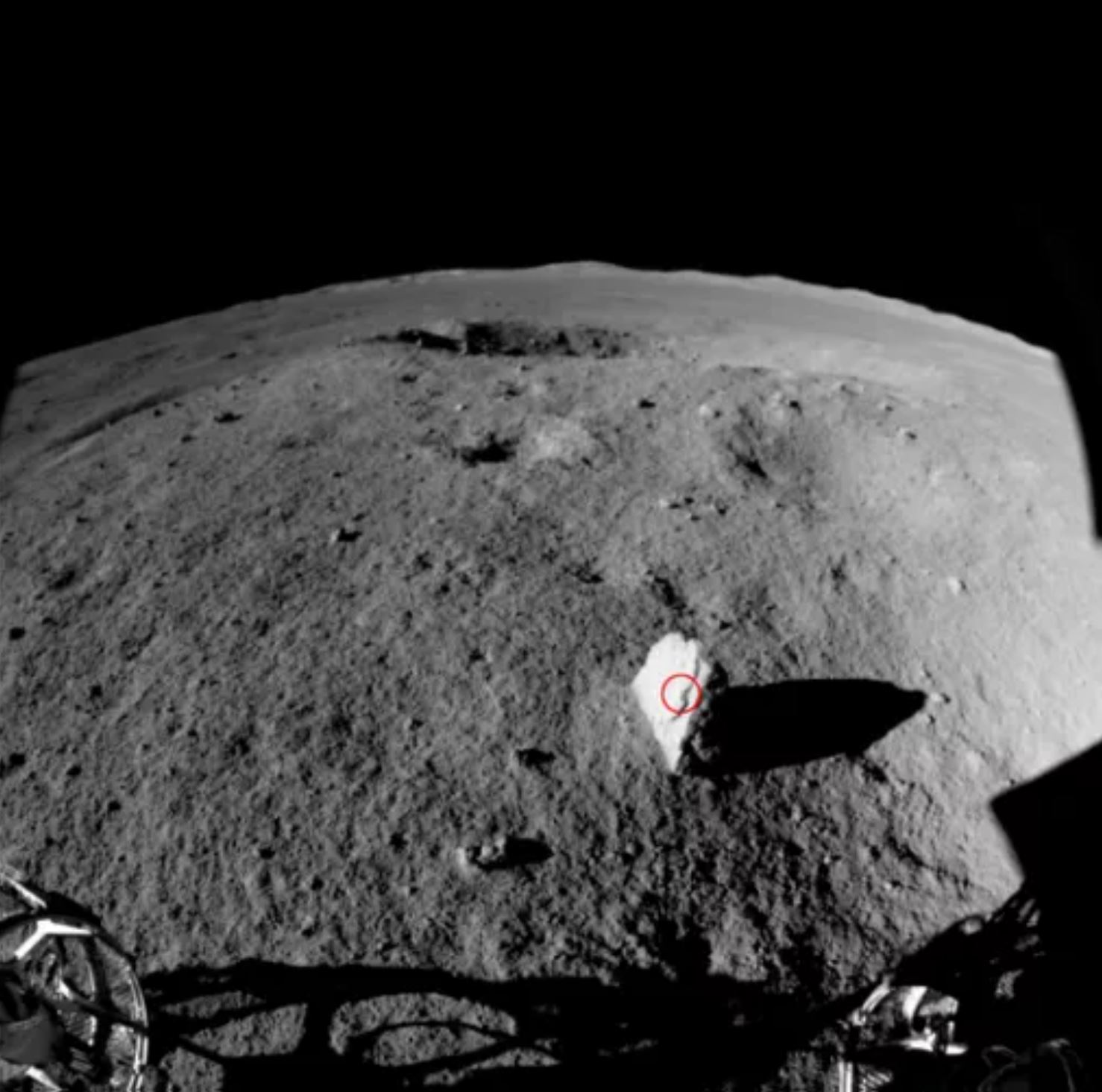
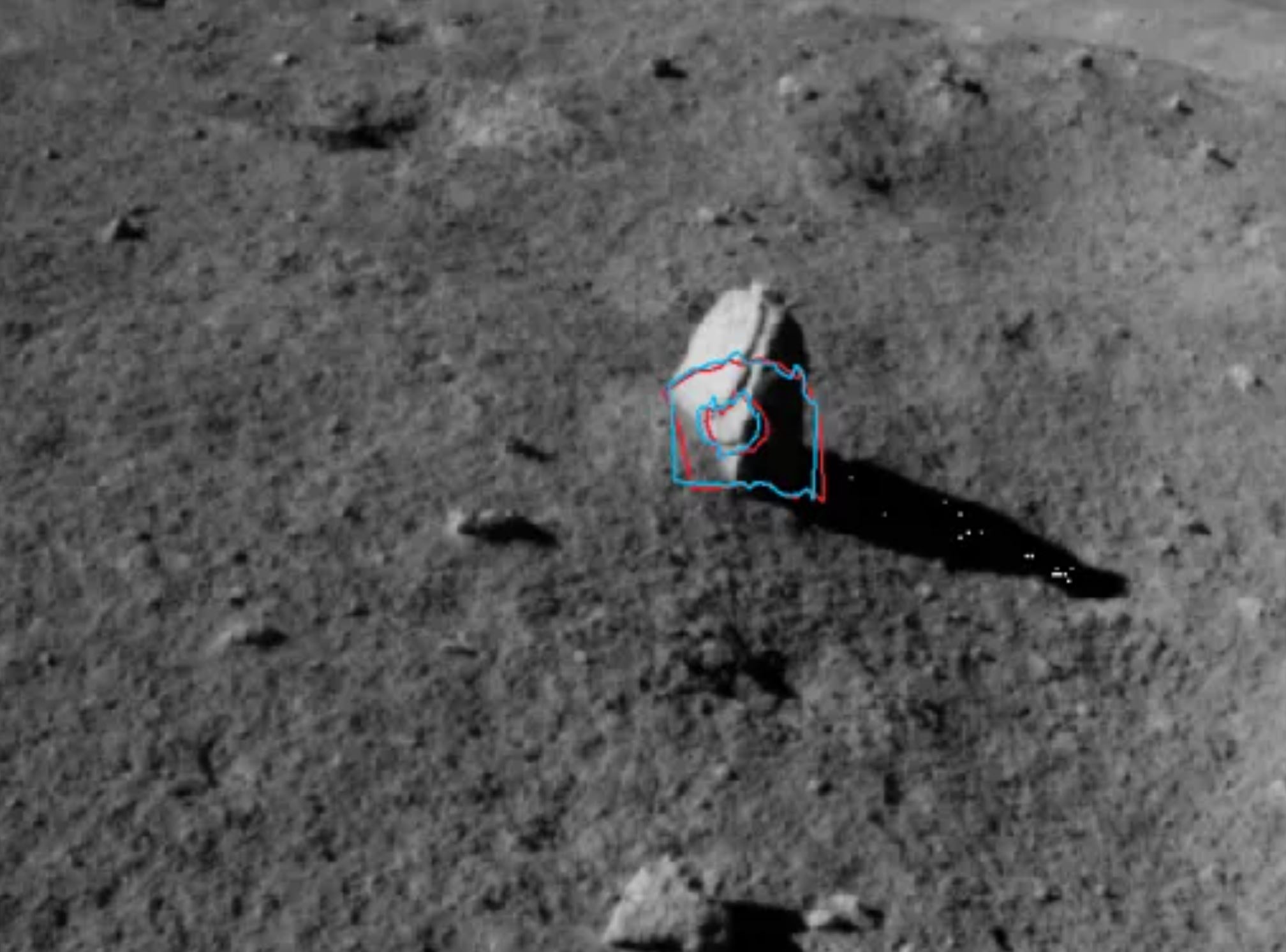

"I would definitely guess an origin as impact ejecta from some nearby crater. It is possible that a rock with this aspect ratio could have been produced by a process known as spallation, where intact fragments of rock are blown off the nearby surface without experiencing the same degree of shock pressures that the immediate target undergoes," Moriarty said, adding that this initial assessment is just a guess.
Followup detections and data from VNIS will provide much greater insight. Clive Neal, a leading lunar expert at the University of Notre Dame, agrees that, based on the images, the specimens are impact ejecta rather than exposed bedrocks. "The question I have is are they locally derived? Hopefully the spectral data will allow an evaluation of the origin as local or exotic, that is, from outside this area," he said.
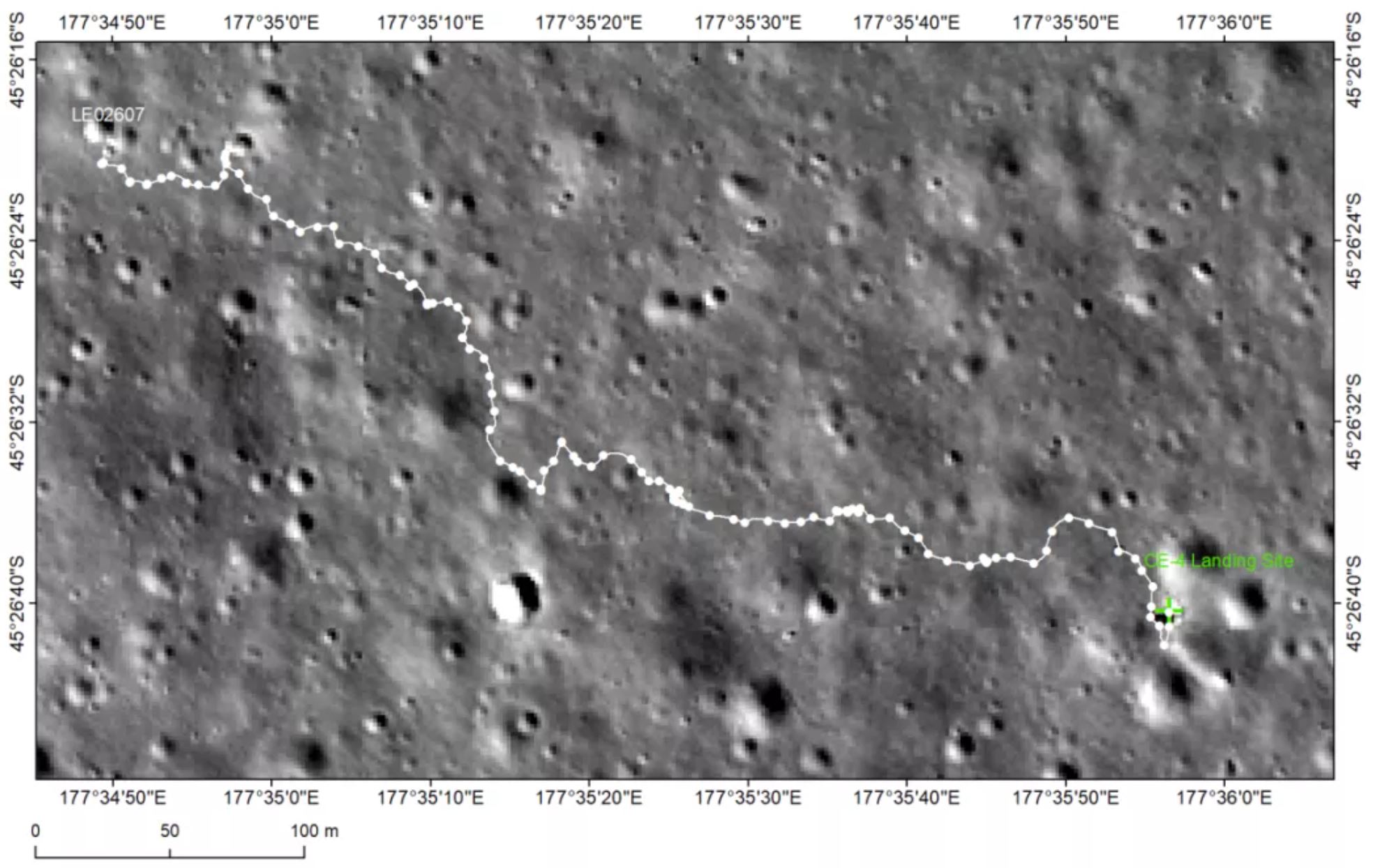


Yutu 2 and the Chang'e 4 lander have already greatly exceeded their design lifetimes of 90 Earth days and one year, respectively. The rover has covered a total of 2,060 feet (628 meters) since its deployment from the lander on Jan. 3, 2019.
In November last year China launched its Chang'e 5 lunar sample return mission. The mission resulted in 3.81 lbs. (1.73 kilograms) of fresh moon samples being delivered to Earth just over three weeks later. CNSA last month published procedures for requesting samples for scientific analysis.
Follow us on Twitter @Spacedotcom and on Facebook.
Join our Space Forums to keep talking space on the latest missions, night sky and more! And if you have a news tip, correction or comment, let us know at: community@space.com.

Andrew is a freelance space journalist with a focus on reporting on China's rapidly growing space sector. He began writing for Space.com in 2019 and writes for SpaceNews, IEEE Spectrum, National Geographic, Sky & Telescope, New Scientist and others. Andrew first caught the space bug when, as a youngster, he saw Voyager images of other worlds in our solar system for the first time. Away from space, Andrew enjoys trail running in the forests of Finland. You can follow him on Twitter @AJ_FI.
